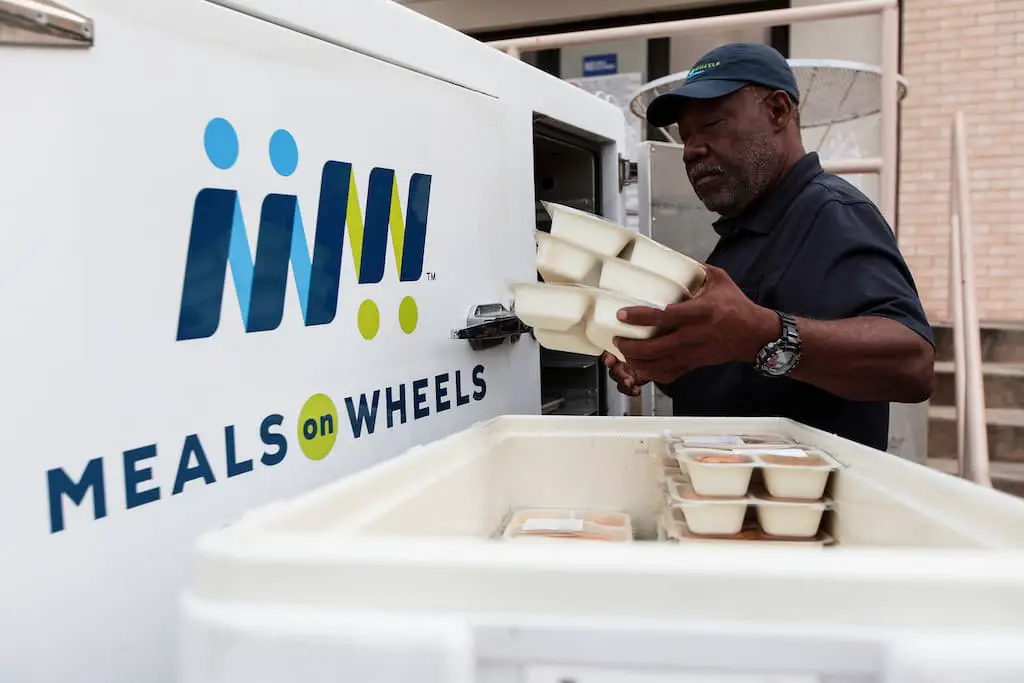What Are the Disadvantages of Meals on Wheels?
Meals on Wheels is a program that delivers meals to seniors who are homebound and unable to shop and cook for themselves. While Meals on Wheels provides an invaluable service, there are some disadvantages to the program that can negatively impact the seniors who rely on it.
The disadvantages of Meals on Wheels include difficulty catering to specific dietary needs and preferences, long wait lists due to limited funding and volunteer capacity, unpredictable meal quality and delivery schedules due to transportation challenges, potential food safety issues, and inconsistent customer service. These issues can negatively impact the nutritional intake and social well-being of homebound seniors who rely on the service.

What are the Disadvantages of Meals on Wheels?
One major disadvantage of Meals on Wheels is the challenge of catering to specific dietary restrictions and food preferences. Meals on Wheels providers design menu options based on general nutritional guidelines, but they cannot always accommodate every senior’s needs and tastes perfectly. For homebound seniors who require special diets or who are picky eaters, the lack of customizable meal options can be an issue.
Another disadvantage is the wait list and eligibility requirements to receive Meals on Wheels. With limited funding and volunteer capacity, there is often more demand than supply for meal delivery. Seniors must meet strict criteria related to their mobility and independence to qualify for services. Even when qualified, seniors can spend weeks or months on a wait list before openings become available.
Meals on Wheels also faces disadvantages related to funding and transportation. As a nonprofit service, Meals on Wheels relies heavily on federal funding and private donations, which fluctuate. Delivery to far-flung rural addresses can be challenging logistically and financially. Limited funding and transportation difficulties can lead to unpredictable meal quality and delivery schedules for recipients.
Food safety and overall quality of the meals provided is another area of potential disadvantage. Since meals are prepared centrally and delivered, there is a risk of improper food handling and transportation affecting food freshness and safety. Lack of variety and appeal of the standard menus offered is also a common complaint.
Finally, inconsistent or poor customer service interactions with Meals on Wheels staff can negatively impact the recipient’s experience. From intake and eligibility verification to delivery drivers and customer support, unfriendly service can make seniors feel disconnected from this critical lifeline.
How Do These Disadvantages Impact Homebound Seniors?
The disadvantages of Meals on Wheels can profoundly impact the homebound seniors who rely on the service. Malnutrition and dehydration are real risks when clients do not receive meals that meet their dietary needs or restrictions consistently. Dissatisfaction with unappealing or unsafe food limits intake further.
The social connection provided by reliable meal delivery is also critical for combating isolation and loneliness. When funding, transportation, or staffing issues lead to unpredictable meal arrival times, seniors lose that important daily human contact. Uncertainty and lack of control over their essential nutrition intake only heightens anxiety and depression.
Beyond the nutritional and social impact, falls are a top cause of injury for the homebound elderly. Weakness from inadequate nutrition and dehydrationgreatly increase seniors’ fall risk. Lack of mobility further concentrates the adverse effects of malnutrition.
What Can Be Done to Mitigate These Disadvantages?
While the disadvantages to Meals on Wheels pose real risks, steps can be taken to mitigate the downsides. Increasing volunteerism, private and corporate donations, and community outreach could provide more resources to expand capacity, hire paid delivery drivers, and accommodate special diets. Partnering with local food pantries, shelters, farms, and restaurants could improve meal variety and quality. Implementing stricter food safety protocols and testing along with more rigorous customer service training would also help.
Transitioning to more flexible delivery models like weekly frozen meal drop-offs could overcome some transportation and staffing limitations. Allowing recipients to customize menus and order groceries for volunteer delivery provides more autonomy as well.
Alternatives to Traditional Meals on Wheels
Beyond reforms to Meals on Wheels itself, other emerging models help fill the meal gap for seniors. Some nonprofits cook and deliver fresh meals daily, focusing on culinary excellence versus lowest cost. Private companies offer weekly meal kit subscription services marketed to seniors. Grocery and prepared meal delivery services provide more freedom of choice at a higher cost. Each alternative has its own advantages and disadvantages.
Conclusion
Meeting the nutritional and social needs of isolated, homebound seniors remains an immense challenge. While programs like Meals on Wheels provide a vital service, disadvantages exist that can negatively impact recipients. Increased community awareness, funding, volunteers, and creativity in service delivery models will help strengthen and expand this critical safety net for our aging population. Addressing the disadvantages is key to maximizing the benefits for homebound seniors nationwide.
Frequently Asked Questions
-
How is Meals on Wheels funded in South Africa?
Your donation provides all funding. Local & National Governments and Aid Organizations such as ADRA Adventist Development & Relief Agency. We also receive funding from the official National Fund Raiser Meals on Wheels.
-
What can I eat on a low sodium diet?
You can enjoy low-sodium foods such as fresh, frozen, or dried fruits like berries, apples, bananas and pears. Groains and beans include brown rice, whole wheat pasta, farro and farro. Sweet potatoes, sweet potatoes and butternut squash are all starchy vegetables. Frozen or fresh meats and poultry: Beef, chicken, turkey, or pork.
-
How do you qualify for Meals on Wheels in Orange County?
Participants in Meals on Wheels Orange County must be at least 60 years old and homebound due to illness or disability. This means that you are unable to shop for and/or prepare meals, and you don’t have any family members or friends who can provide regular support.
-
Does Meals on Wheels have a positive or negative impact on the community?
Meals on Wheels is available in almost every American community. They provide nutritious meals and friendly visits as well as safety checks to older adults. This allows them to lead more independent and dignified lives in the places they choose.
-
Who is the meal the wheels for?
Hot, nutritious meals are delivered hot to those who cannot or are not able to prepare their own meal. There are many options for meals, depending on the cultural or religious preferences, dietary requirements and personal preference.
-
Is there Meals on Wheels in Northern Ireland?
A’meals at-home’ service, which is similar to most assistance that’s designed to assist you in staying more independent, may be available to you after a local social services assessment. Sometimes, this service is called “meals on wheels”.
-
How much does Meals on Wheels cost in Ireland?
Service for Meals on Wheels: 1 meal costs 6 delivery The cost of the meal includes both a main dish and dessert. Deliveries are Monday through Friday, except Tuesday and Wednesday.
-
What was the bread line?
breadline. / (brdlan) / noun. A queue of people waiting to receive free food from a government agency. Living below the poverty line; on the breadline.
-
Do you pay for Meals on Wheels UK?
Meals on Wheels in the UK is free for some, but it costs a small fee for seniors and disabled. Donations of funds can be made by anyone. The driver or volunteer who delivers the meal will not only check the client, but will also make sure that the food is properly accounted for.
-
Do you have to pay for Meals on Wheels Ireland?
What is the cost of a meal? Cost of a meal varies depending on what is included and the service provider.
-
Who funds Meals on Wheels in Ireland?
Minister of State, Department of Health. The Health Service Executive funds meals on wheels. Most of the funding comes from grants to non-profit agencies. The HSE provides a limited amount of services.
-
How much does it cost to feed one person a day?
Average Food Costs by Product in the United States The monthly cost to feed one person is $342.11. Average daily food costs per person are $11.04. These insights are provided by NUMBEO, which also provides an overview of other expenses worldwide.
-
What is Meals on Wheels Ireland?
The National Meals on Wheels Network (NMOW) was created under the auspices of Irish Rural Link. It was founded in 2015 Its overall purpose is to support people in need of services that will help them to live a healthy, independent life.
-
What is a buffet service?
Buffet Service or Buffet Service is a term that refers to unpackaged food prepared foods being displayed and/or served at event attendees’ tables, counters or other equipment in the dining room, lobby, meeting rooms or dining areas.
-
How much does Meals on Wheels cost in Victoria?
Meals on Wheels Victoria’s funding comes from member subscriptions (100 dollars per year) as well as a contribution of $5000 annually by the federal government. We have received funding to hire a state manager for the 2021/22 fiscal year.







